When I go to a place for the first time, I avoid looking up photos online. I want to see it with fresh eyes, not through the lens of someone else who has been there before me. With famous places, this is impossible. Most people in the world have seen the Eiffel Tower without having ever been to France. However, Los Santos de la Humosa isn’t a tourist spot for visitors to Spain, and when I got into the car that Sunday morning, I didn’t know what to expect.
This was the second day of my first time visiting Spain, and Biko and I were already joking about moving there permanently. Who hasn’t had that thought cross their mind when they are on a vacation and the destination woos you with all its wonders? An afternoon at Los Santos de la Humosa deepened that fantasy.
My friend Manuel’s family had invited us over for lunch in their town. He said it would be a forty-minute drive from Madrid, and I thought that Los Santos would be an extension of the capital city. The Greater Buenos Aires in Argentina is a vast metropolitan area surrounding the capital, where you can drive on the highway for more than two hours and still see buildings. But this was different. Very quickly, Madrid faded into the distance, and open fields and rolling hills amazed us through the car window.
When we left the main road and took the M-226, ours was the only car heading up to the town atop a flat-topped mountain. The curves and inclines made our friend Borja drive slowly, which I loved because I could observe every detail: narrow streets with barely any sidewalks, low houses with clothes sun drying on the balconies, and red-tiled roofs.
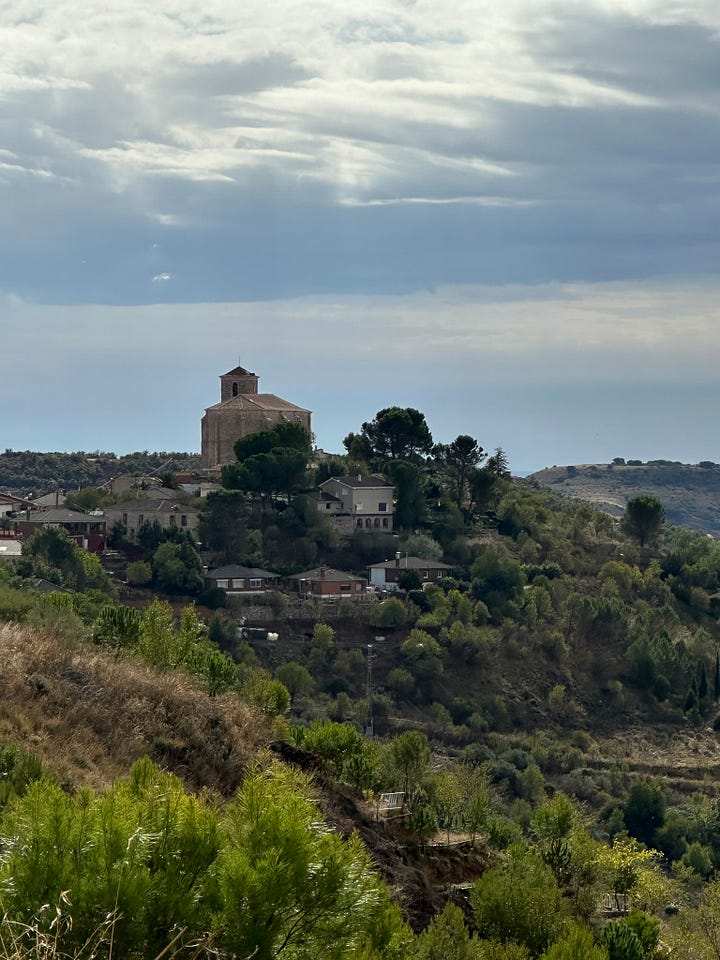
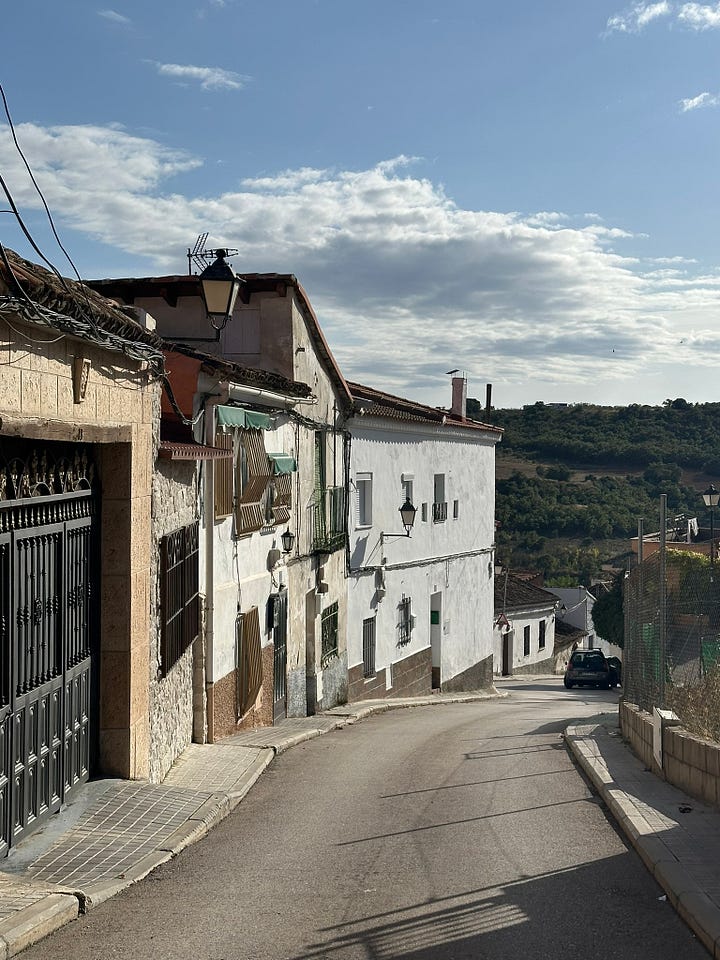
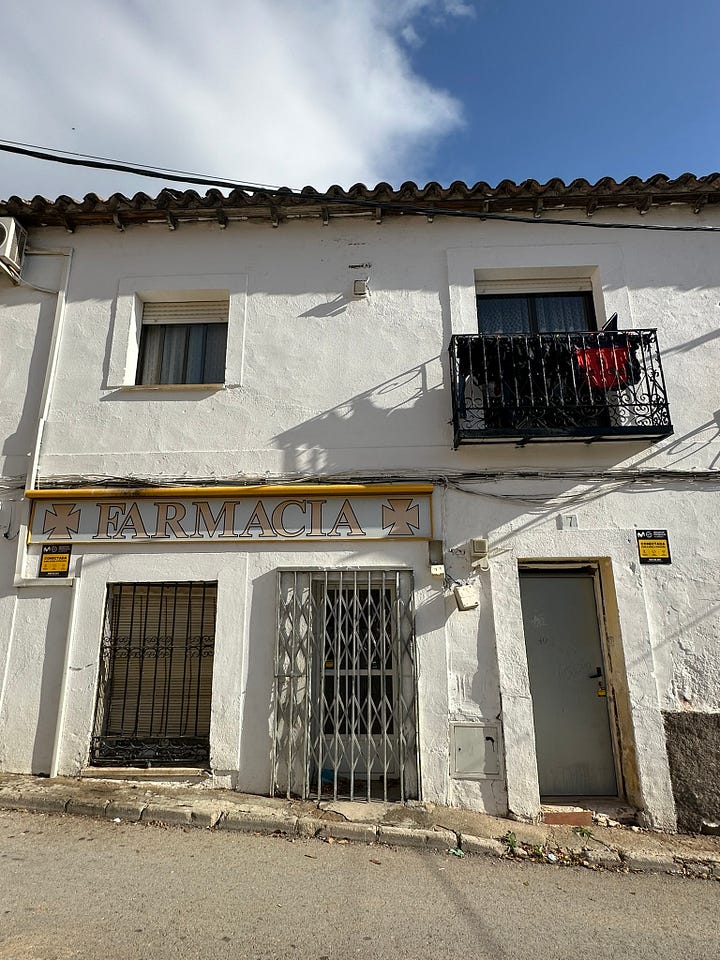
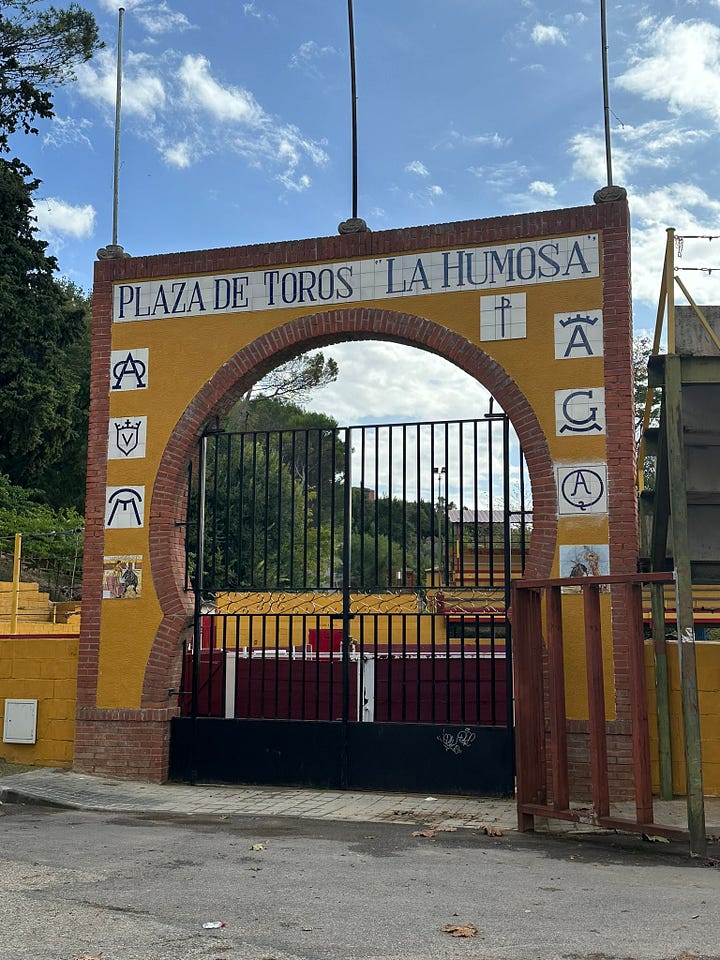
Manuel’s family home was on the edge of a hill. We parked the car and walked about 160 feet up to the front door. His parents welcomed us with fish tapas, and they gave us a crash course on how to make paella. Although Biko’s inner chef made mental notes of each step, we both knew we would not be able to replicate that meal. The local ingredients, Manuel’s father’s expert hands, and the view of Madrid’s skyline were simply irreplaceable.
After two plates of paella and watermelon for dessert, we set out to explore Los Santos. The town sits more than 900 meters above sea level, and the Church of San Pedro is its tallest and oldest building. I would have loved to see it from the inside, but it only opens for the one daily mass, which we missed, and I had to settle for taking pictures of its centuries-old door and enjoying the surrounding views. Biko spotted a sun clock on one of its columns, accurately showing half past four. Certainly, people in Los Santos do not need a smart watch paid plan.
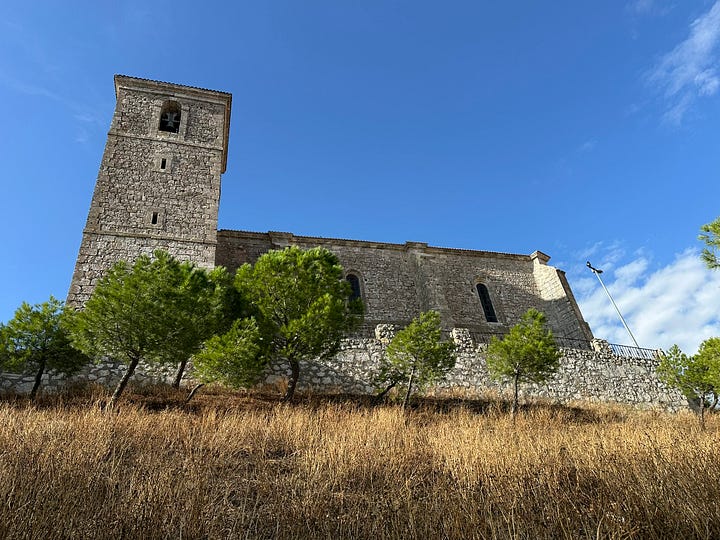
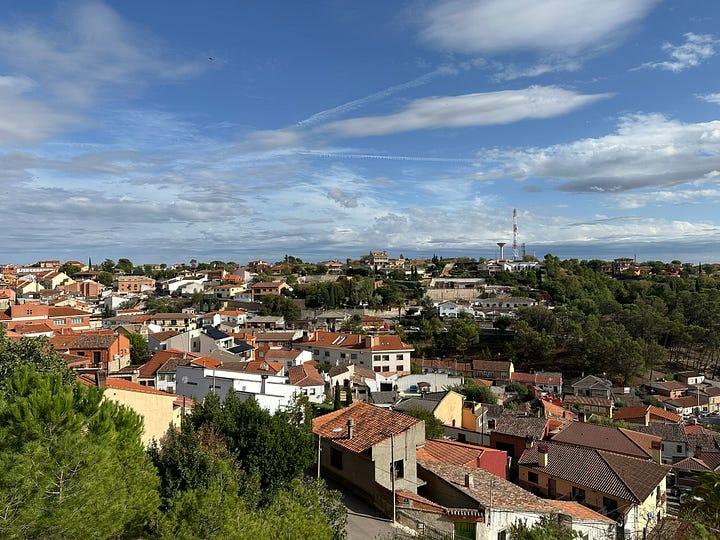
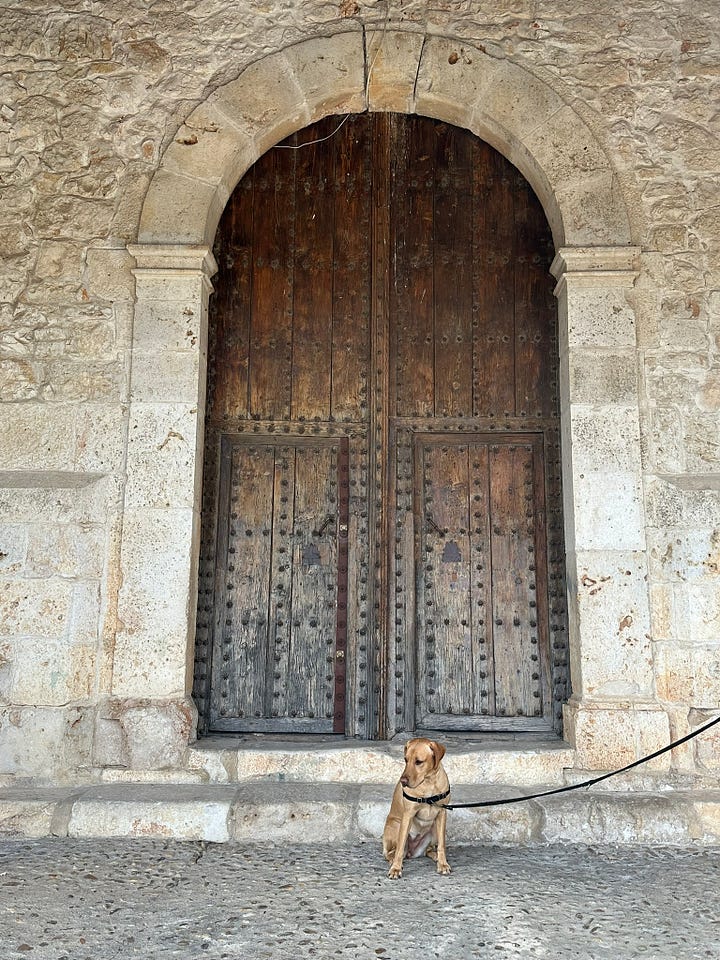

We walked down toward the police station and city hall at the central plaza. The town was quiet and seemed deserted during siesta time, except for one man sitting on a bench, his cap shielding him from the sun and a cane keeping his back straight. “Well, look who’s here!” exclaimed Manuel in his charming Spanish accent. “Grandpa, how are you?”
Los Santos de la Humosa has nearly three thousand inhabitants. That’s not many, but there were still three thousand chances that the only person sitting in the plaza would be Manuel’s grandfather. In my hometown, I would also frequently bump into my grandmother sitting on a bench on my way home, and I found the coincidence amusing.
Don Luis had heard there would be a bullfight at four in the afternoon and was waiting for a friend so they could go together. As a child, I remember my grandfather watching bullfights on TV, and I knew they still took place in some countries, including Spain, but at that moment, it seemed surreal that there would be one in town that day. Bullfighting is considered cultural heritage under Spanish law, but many people believe that animal cruelty should have no place in modern traditions. Manuel told me that the debate over banning bullfighting continues, but fortunately, fewer and fewer Spaniards are interested in the sport or attend the fights.
A few blocks down the hill, we knocked on his grandmother’s door. She wasn’t expecting us, yet she didn’t hesitate to put aside her knitting and invite us in, excited to welcome international visitors into her home. Her walls proudly displayed photos of her children and grandchildren receiving high school and university diplomas and having their first communion, a milestone in a Catholic person’s life. We spent the afternoon chatting about our trip to Spain over olives and cheese. She showed us old pictures of the town, proudly pointing out how handsome her husband looked, and insisted we stay for dinner. To her disappointment, Manuel explained we already had dinner plans and had to get back to Madrid before sunset, but we promised we would stay longer next time. We still need to try Grandma’s tortilla de patatas, so next time we’re in Spain, we’ll have a day reserved to visit her.
As an Argentinian, Spain had always felt like a distant relative, one I had heard my family talk about but never met myself. It was moving to finally see so many Spanish traditions that felt so familiar, to put into context the many stories about Spanish immigrants in Argentina, and to feel at home so far away from home.
If you’ve been to Spain, what was your experience like? Have you heard of or been to Los Santos de la Humosa?
If you came across this newsletter by chance, subscribe to receive my upcoming emails.
If you like what I write and want to help this project grow, you can share A Platypus Life with others.
Until next time!
Maria Pia

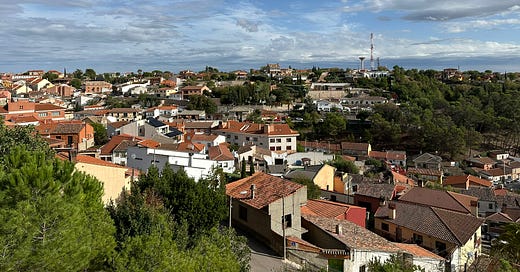


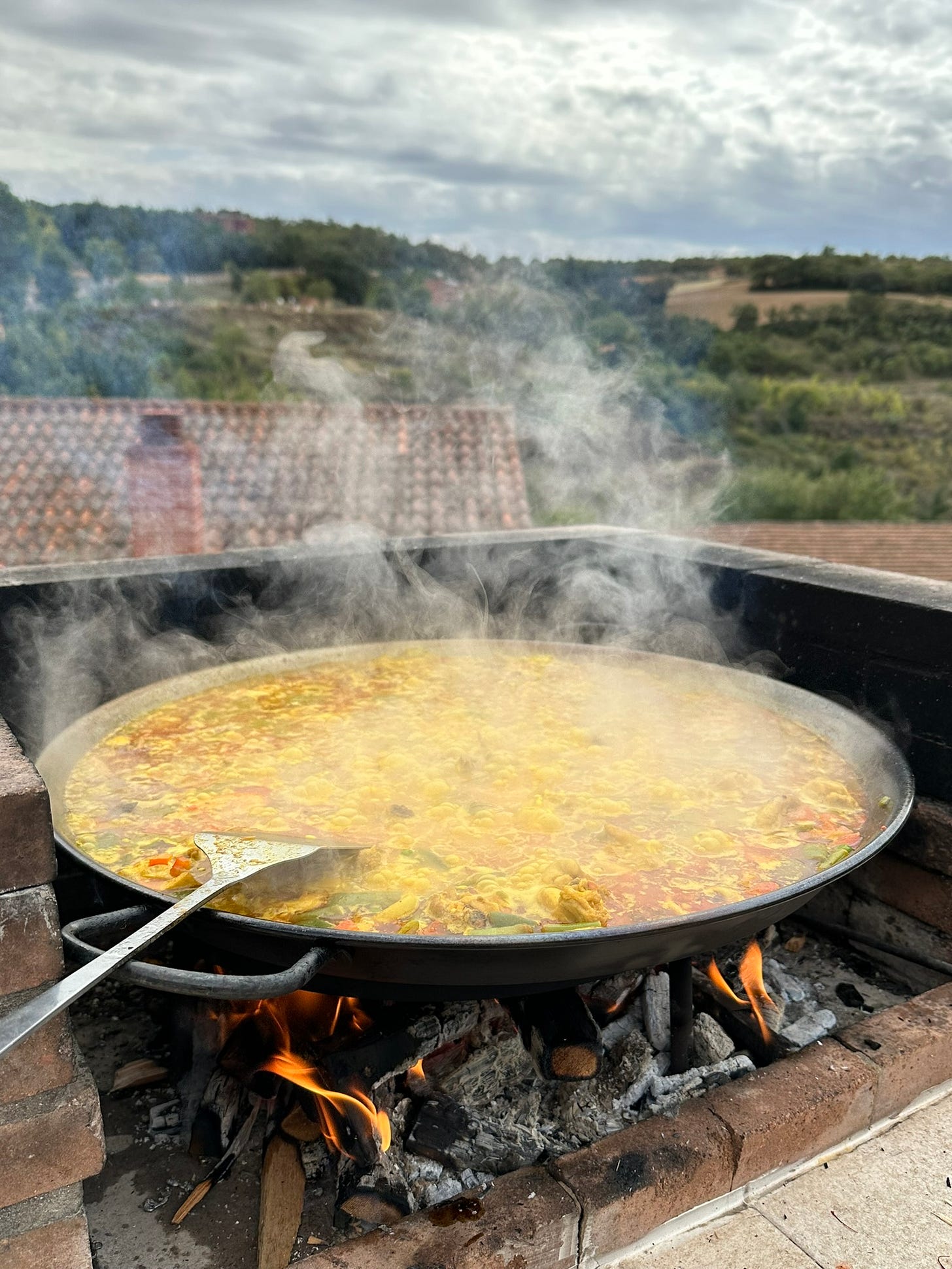

What an awesome trip😎Thanks for taking me to Madrid with you!